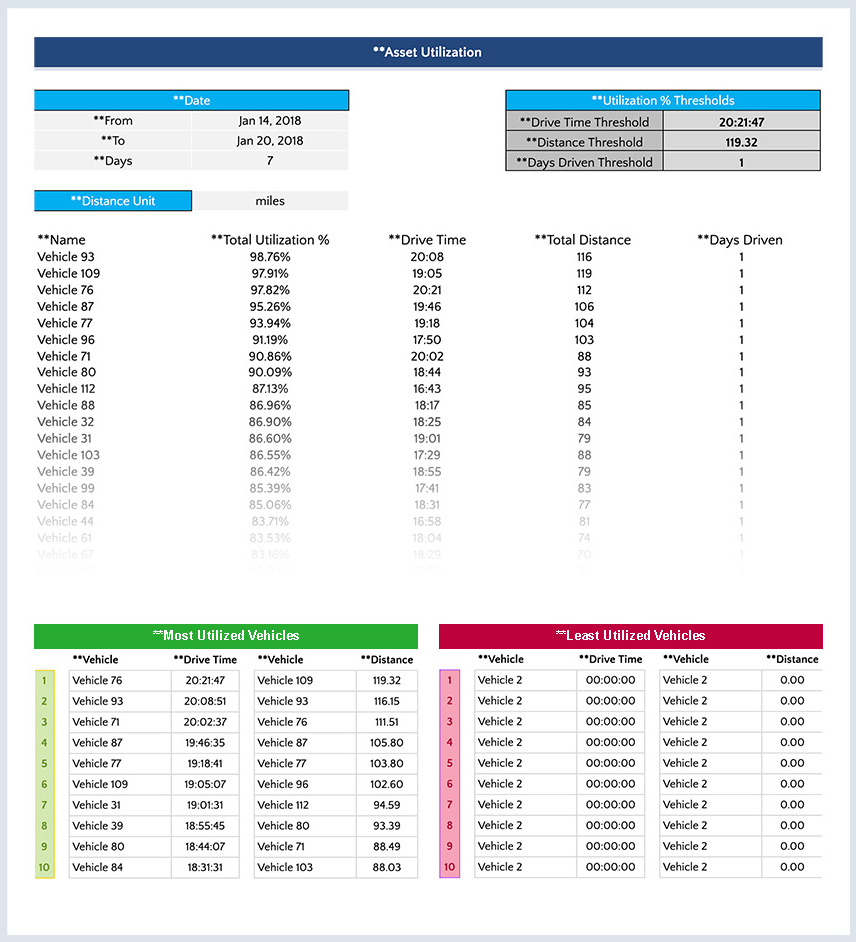Streamlining your government fleet: Why rightsizing is the right move
How to rightsize with telematics and make data-driven decisions for your government fleet

Did you know it’s possible to reduce costs and improve overall fleet efficiency with just one maneuver? It’s not magic, it’s rightsizing. This doesn’t have to mean downsizing but rather figuring out how to optimize the use of vehicles in your mixed fleet.
Rightsizing is such an effective tool that the Federal government has put policies in place to ensure that agencies across the U.S. are implementing fleet utilization strategies.
The Federal government’s call to rightsize
In 2019, the U.S. Federal government unveiled comprehensive strategies for agencies to follow new measures aimed at improving overall fleet efficiency. Chief among these strategies was to rightsize the fleet while others included reducing vehicle miles traveled and replacing inefficient vehicles with alternative fuel vehicles.
Agencies are required to conduct a study or vehicle allocation methodology (VAM) of their fleet once every five years to identify the opportunities to eliminate unnecessary vehicles and to rightsize.
However, knowing these studies are a requirement doesn’t necessarily equip agencies with the right tools to perform effective VAMs. The best place to start a rightsizing analysis is with data.
How telematics can help you rightsize your fleet
One size certainly does not fit all when it comes to fleets. Vehicles perform various duties and have unique purposes within each agency. Start by analyzing and categorizing each vehicle into different segments based on their usage.
Thankfully, calculating a vehicle's utilization is much simpler than it used to be. With Geotab’s customizable asset utilization reports, you can easily see at a glance which vehicles are the most and least utilized.
The Asset Utilization report can be broken down by vehicle type, build any calculation for the usage percentage and include time in use (calculated through on-duty versus off-duty use).

Other data points that can easily be factored into the Asset Utilization report include:
- Times of day the vehicles are used – This is useful if your employees are working in shifts so you can identify opportunities where car sharing might be an option.
- Months of the year the vehicles are used – When looking at seasonal workers or operations, this is useful to know when certain vehicles will be in heavy rotation.
- Different vehicle locations – Sorting vehicles by location can be a quick way to spot any patterns of under or over utilization.
Now armed with a detailed audit of your fleet’s usage, you can see which vehicles are underused or used too much. Reallocating assets becomes that much easier with data identifying the rightsizing opportunities.
How the State of Utah police rightsized their fleet
When the State of Utah’s police force realized their fleet was bloated with low mileage vehicles, they set out to improve utilization.
Specifically, they wanted to tackle these key components of a rightsizing analysis for their Department of Corrections — measure vehicle utilization, then track on-duty versus off-duty use of vehicles.
Telematics data easily pulled the relevant information the DOC needed and even correlated real odometer mileage and engine hours for more accurate vehicle utilization reporting. With integrations into vehicle equipment, Geotab can also show time spent with the siren or light bars activated versus time spent patrolling.
This level of analysis into how the vehicles were truly used helped the State of Utah ultimately downsize their fleet by 60 vehicles, saving money and freeing up budget for other important expenses.
Let’s build your agency’s fleet utilization report
With potential cost savings to uncover, performing an Asset Utilization report is a great way to improve efficiency in your agency’s fleet. Plus, you’ll save valuable resources and get the most out of your fleet’s assets.
Asset utilization is just one tool in the suite of Geotab’s government fleet management solutions. Visit geotab.com/government/ for more information or contact government@geotab.com to get started.
Subscribe to get industry tips and insights
The Geotab Team write about company news.
Table of Contents
Subscribe to get industry tips and insights
Related posts

Field service is losing money to bad data: Go beyond GPS with smarter telematics
June 27, 2025
3 minute read


Enhancing winter road maintenance with postseason materials usage analyses
June 20, 2025
6 minute read

Building a self-sustaining school bus driver safety program with Geotab Vitality
June 13, 2025
7 minute read

The impact of unproductive idling on police vehicle service life
June 10, 2025
3 minute read

Unlock field service ROI: Your practical guide to connected operations playbook
June 9, 2025
3 minute read